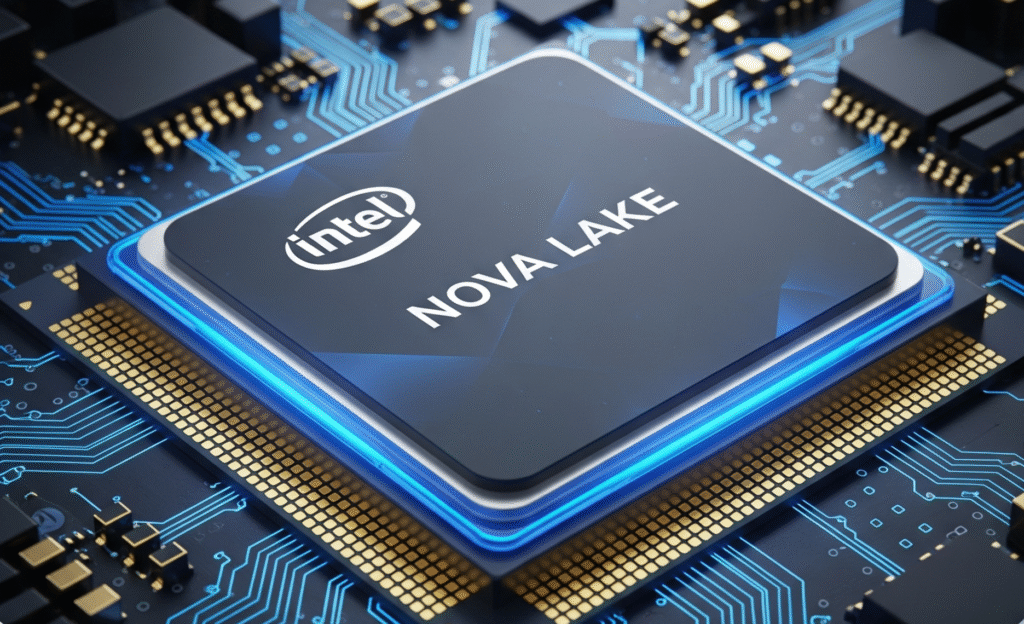The CPU landscape is on the brink of a seismic shift, and Intel is leading the charge with its upcoming Nova Lake lineup. Slated for release in the second half of 2026, Nova Lake represents a bold leap forward in architecture, core count, and platform capabilities. With up to 52 cores, support for DDR5-8000 memory, and a new LGA 1954 socket, Intel is clearly aiming to redefine desktop performance.
Let’s break down what makes Nova Lake one of the most anticipated CPU launches in recent memory.
A Core Revolution: Up to 52 Cores in a Consumer CPU
At the heart of Nova Lake is a radical increase in core count. The flagship Core Ultra 9 model is rumored to feature:
16 Performance Cores (P-cores)
32 Efficiency Cores (E-cores)
4 Low-Power Efficiency Cores (LPE-cores)
That’s a staggering 52-core configuration, a massive jump from the 24-core limit of current-gen Intel CPUs. This multi-tiered core design allows Intel to optimize for both high-performance tasks and ultra-efficient background processing.
Other SKUs in the lineup include:
Core Ultra 7: 14 P-cores, 24 E-cores, 4 LPE-cores (42 cores total)
Core Ultra 5: Up to 8 P-cores, 16 E-cores, 4 LPE-cores (28 cores total)
Core Ultra 3: Entry-level models with 4 P-cores, 8 E-cores, and 4 LPE-cores

Architectural Overhaul: Coyote Cove and Arctic Wolf
Nova Lake will debut Intel’s new Coyote Cove P-cores and Arctic Wolf E-cores, replacing the Lion Cove and Skymont cores used in Arrow Lake. These new cores are expected to deliver significant gains in both single-threaded and multi-threaded performance.
The addition of LPE-cores—previously seen only in mobile chips—marks a first for Intel’s desktop lineup. These ultra-low-power cores are designed for background tasks and idle states, improving overall energy efficiency.
Platform Upgrades: DDR5-8000, PCIe 5.0, and a New Socket
Nova Lake isn’t just about raw CPU power—it’s also about platform evolution. Key upgrades include:
DDR5-8000 memory support for blistering-fast data throughput
36 PCIe 5.0 lanes, enabling multiple GPUs and high-speed SSDs
New LGA 1954 socket, replacing the current LGA 1851 used by Arrow Lake
These enhancements make Nova Lake a future-proof platform for gamers, creators, and professionals alike.

Power and Efficiency: A Balancing Act
Despite the massive core counts, Intel is keeping power consumption in check. The flagship Core Ultra 9 is expected to have a TDP of 150W, while entry-level models will stay around 65W. This balance is achieved through Intel’s tile-based architecture, which separates core types into different chiplets for better thermal and power management.
What This Means for the Competition
With AMD’s Zen 6 architecture also on the horizon, Nova Lake sets the stage for a fierce battle in the high-end CPU market. Intel’s aggressive core scaling and architectural innovation could give it a significant edge—especially in workloads that benefit from massive parallelism.
Final Thoughts: A Glimpse Into the Future
Intel’s Nova Lake lineup isn’t just an incremental upgrade—it’s a reimagining of what desktop CPUs can be. With a hybrid architecture that scales up to 52 cores, cutting-edge memory and I/O support, and a focus on power efficiency, Nova Lake is poised to be a game-changer.
Whether you’re a gamer chasing frame rates, a content creator rendering 8K video, or a developer running complex simulations, Nova Lake promises to deliver the horsepower you need—and then some.






